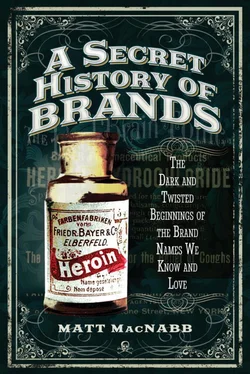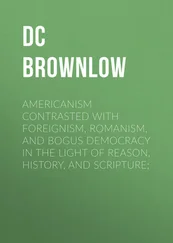Bakelite was marketed as ‘The Material of a Thousand Uses’. The plastic was first available in clear, black, grey, blue, yellow, green, red and brown. It would be used in products ranging from kitchen utensil handles, pens, billiard balls, tobacco pipe stems, buttons, jewellery, poker chips, lamps, and even one of the original versions of the Viewmaster toy! Bakelite was extremely prevalent all over homes in both America and England. The idea of Bakelite inspired not only products, but art as well. Coco Chanel, who has her own chapter elsewhere in this book, often utilised Bakelite in her very popular jewellery throughout the 1920s. Bakelite would even be featured on the cover of the first issue of Plastics Magazine in October of 1925.
The marketing campaign for Bakelite touted the product as ‘Helping The Family Keep Well’, and pushed the various medical applications for the product. The advert highlighted the fact that Bakelite could be found in everything from hearing aids, oralights and dental restoration. The ads also implored the manufacturing industry to be open to the possibility of Bakelite: ‘All major industries are making profitable use of one or more Bakelite materials, either through using them in the product itself, in production machinery, or in maintenance.’
Baekeland had managed to create a product that revolutionised the marketplace, but his patent would only last for so long – the patent for Bakelite expired in 1927. That left the market open for other companies to swoop in and start developing their own versions of the plastic. The most famous of these was the American Catalin Corporation, which produced Bakelite-style plastic in a wider-range of colours, offering upwards of fifteen brighter colours to the public. This flooded the marketplace with a plethora of products similar to, and often mistaken for, the actual brand name Bakelite. The opening of the market didn’t hurt Baekeland’s business, though. In fact, in 1929, General Bakelite Company got its largest ever order from Siemens telephone for phenolic moulding powder, used for the casing of telephones.
Baekeland sold his company in 1939 and retired to spend his remaining days sailing on his yacht and enjoying the later years of his life. Leo Baekeland would go on to be renowned in his field and made the cover of the prestigious Time Magazine on 20 May 20 1940, wherein he was labelled as the ‘Father of Plastics’. Leo Baekeland passed away on 23 February 1944, at the age of 80. The National Inventors Hall of Fame recognised Baekeland in 1978, and the Rail of Fame for United States Business Leadership would also award him posthumous honours in 1983.
The Baekeland Family
Leo Baekeland forged an amazing legacy for his family, but it was that family who would end up casting a shadow on the Bakelite legacy forever. A sad reality is that, while Leo may have worked hard for his money, inherited wealth can often end up being as much of a curse as it is a blessing. The Baekeland family fortune created a life of luxury for the next few generations, providing every comfort and advantage that wealth could buy.
Leo and Celine had had three children, but only two would survive to adulthood, George and Nina. Their daughter Jenny died at the age of 5, stricken with influenza. It was George Washington Baekeland, or rather his son and grandson, who would sully the family name forever. George and his wife Cornelia Fitch Middlebrook had two children: Cornelia Fitch ‘Dickie’ Baekland and Brooks Baekland. Now, by the time the grandchildren of Leo Baekeland arrived in the family, their wealth and prestige had been well established. Those that knew Brooks would describe him as arrogant and cocky, as many socialites who are born into money tend to be. Brooks fancied himself a writer, although he neglected to write much of anything at all.
Brooks’s sister Cornelia introduced him to Barbara Daly, the woman he would subsequently marry. Barbara was an aspiring actress who didn’t really act, just as Brooks was a writer who didn’t really write. Barbara was undeniably a stunning beauty with ravishing red hair. She did model for a time, with her pictures gracing the pages of magazines like Vogue and Harper’s Bazaar . The two indulged together in the never-ending sloth and decadence of a wealthy lifestyle. They would rub elbows and party with the finest in celebrity, aristocracy and the privileged all over the world. Barbara soon found herself pregnant and the couple’s son, Antony, was born in August of 1946. The couple set up a more permanent home in the Upper East Side of New York City.
It is said, through gossip and various second-hand accounts, that Barbara Baekeland was infamous for her mood swings and erratic behaviour. She and Brooks entertained their scores of famous and wealthy friends in New York, including the likes of Greta Garbo and Tennessee Williams. Barbara is said to have been a heavy drinker, an ailment that didn’t serve to help her already often severe depression. The marriage between her and Brooks was far from conventional as there are many accounts of regular extra-marital affairs on both sides. The overall atmosphere of hedonism and extravagance may have shielded Barbara, and ultimately her son Antony, from any outside recognition of harmful mental illness. In fact, many could easily write off Barbara’s often rude and over-the-top behaviour as that of the spoiled bourgeoisie. It became increasingly clear, however, that there was more going on in the Baekeland bloodline than simple misbehaviour.
Over the course of their marriage, Brooks continued his affairs and would often raise the subject of divorce with Barbara, to which she would respond with threats or suicide attempts. The extreme tactics always worked on Brooks and he would remain in the ‘marriage’. The family, along with Antony, began to move around in 1954, living in Italy, Paris and London. Barbara and Brooks shipped Antony off to boarding school when he was a young boy, not an uncommon practice for the well-to-do. Antony had a difficult time focusing in school and began to get kicked out for his poor grades; eventually he would simply leave the schools on his own and head home to his mother. Antony would end up spending a lot of time away at various boarding schools and it was during this time that the Baekelands would discover that their son was homosexual, a fact that didn’t sit well with either Brooks or Barbara. The couple finally divorced in 1968, leaving Barbara alone to her own devices.
Barbara and Antony’s relationship became seriously clingy and dark. Barbara was obsessed with her son’s sexuality and it is said that she made many efforts to try and ‘cure’ her son of his homosexuality. Claims that she hired female prostitutes to take him to bed aren’t difficult to find, but it is the next step that brings a truly disturbing turn to the story. Barbara was so determined to control Antony’s sexuality that she allegedly engaged in an incestuous relationship with him.
There was a lot of trouble brewing for the Baekeland family, even aside from the complexities of the alleged incest. Antony was clearly mentally ill and was prone to violent outbursts. It is said that Antony would often fight with his mother and that knives were involved, but nothing serious came of it…until it did. There were some early indicators that Barbara’s family may have had a history of mental illness. Although undiagnosed, we know that her mother, Nina Daly, suffered from a mental breakdown before Barbara was born and her father, Frank Daly, killed himself in 1936, when Barbara was 10 years old. Antony was in serious need of psychiatric attention, but his father refused to pay for the treatment, referring to the mental health field as ‘professionally amoral’.
The violence between Antony and his mother first became a serious issue one afternoon in London in July of 1972. A violent scene unfolded that involved Antony dragging his mother by her hair and attempting to throw her into oncoming traffic. Fortunately for Barbara, her friend Susan Guinness witnessed the attack and intervened to assist her. Barbara refused to press formal charges against Antony, despite the desire of the police at the time to arrest him for attempted murder.
Читать дальше












